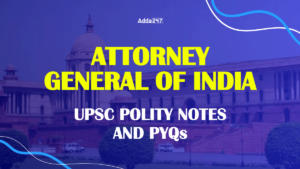Table of Contents
The constitution of India has established certain provisions for governance of special areas which are referred to as Scheduled Areas and Tribal Areas, it should be noted that in the north east India there have been major demands of introducing Autonomous District Councils in line with the 6th Schedule of Indian Constitution.
In this article will be studying about the Administration of both the scheduled and Tribal areas and this topic is important for UPSC GS 2 (Indian Polity) and UPSC GS 3 (Internal Security) papers.
Scheduled Areas
Administration of Tribal Areas
Further, we will be understanding the administration of Tribal Areas, as above we studied for scheduled areas.
- Tribal Areas in the above mentioned 4 states have been declared autonomous districts, under the executive authority of the state.
- Governor can organize and re-organize the autonomous districts.
- The district can be divided into several autonomous regions if it has presence of more than one tribe.
- Each of the autonomous districts have a district council, having 30 members in total.
- Out of these 30 members, 4 are nominated by the Governor and 26 are elected by the people.
- Each elected member serves a tenure of 5 years and the nominated members serve with the pleasure of Governor.
- The district and regional councils can make laws for their areas in the following matters
- Land
- Forest
- Canal Water
- Marriage and Divorce
- Social Customs
- Inheritance of property
- Village administration
- It should be noted that all laws are subject to the assent from the Governor.
- District and regional council can also constitute Village Councils or Courts for cases between the tribes.
- District and regional council can also collect land revenue and impose certain tax.
- Governor can appoint a commission to examine reports on welfare of the autonomous districts, he can also dissolve district or regional council based on the recommendations from the commission.
List of Tribal Areas
ASSAM :
- The North Cachar Hills District
- The Karbi Anglong District
- The Bodoland Territorial Areas District.
MEGHALAYA :
- Khasi Hills District
- Jaintia Hills District
- The Garo Hills District.
TRIPURA :
- Tripura Tribal Area District
MIZORAM :
- The Chakma District
- The Mara District
- The Lai District.
UPSC PYQs for Scheduled and Tribal Areas
Q1. With reference to Scheduled Areas in India, consider the following statements:
- Within a State, the notification of an area as Scheduled Area takes place through an Order of the President.
- The largest administrative unit forming the Scheduled Area is the District and the lowest is the cluster of villages in the Block.
- The Chief Ministers of the concerned States are required to submit annual reports to the Union Home Ministry on the administration of Scheduled Areas in the States.
How many of the above statements are correct?
(a) Only one
(b) Only two
(c) All three
(d) None
Correct answer: b
Q2. With reference to ‘Scheduled Areas in India, consider the following statements: (2023)
1. Within a state, the notification of an area as Scheduled Area takes place through an Order of the President.
2. The largest administrative unit forming the Scheduled Area is the District and the lowest is the cluster of villages in the block.
3. The Chief Ministers of the concerned states are required to submit annual reports to the Union Home Ministry on the administration of Scheduled Areas in the states.
How many of the above statement(s) is/are correct?
(a) Only one
(b) Only two
(c) All three
(d) None
Correct answer : b (statement 1 and 2 are correct)
Q3. If a particular area is brought under the Fifth Schedule of the Constitution of India, which one of the following statements best reflects the consequence of it? (2022)
(a) This would prevent the transfer of land of tribal people to non-tribal people.
(b) This would create a local self-governing body in that area.
(c) This would convert that area into a Union Territory.
(d) The State having such areas would be declared a Special Category State.
Correct answer : a
Q4. The provisions in Fifth Schedule and Sixth Schedule in the Constitution of India are made in order to (2005)
(a) protect the interests of Scheduled Tribes
(b) determine the boundaries between state
(c) determine the powers, authority and responsibilities of Panchayats
(d) protect the interests of all the border states
Correct answer : a
UPSC Mains PYQs for Scheduled and Tribal Areas
- Why are the tribals in India referred to as ‘the Scheduled Tribes’? Indicate the major provisions enshrined in the Constitution of India for their upliftment. (2016)
- What are the protections afforded to Scheduled Tribes in the Fifth Schedule of the Indian Constitution? (2005)



 Attorney General of India UPSC Notes (Ar...
Attorney General of India UPSC Notes (Ar...
 Election Laws in India UPSC Notes
Election Laws in India UPSC Notes
 Indian Parliamentary Forums UPSC Notes
Indian Parliamentary Forums UPSC Notes




